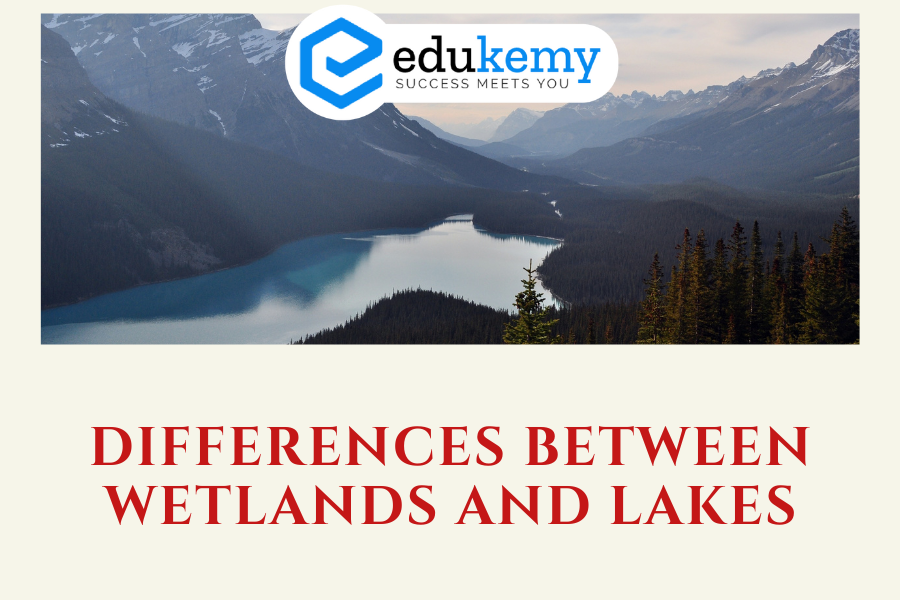Wetlands and lakes are two distinct types of aquatic ecosystems that play vital roles in supporting biodiversity and providing various ecosystem services. While both are characterized by the presence of water, they differ significantly in terms of their formation, physical characteristics, ecological functions, and biodiversity. Wetlands encompass a diverse range of habitats, including marshes, swamps, and bogs, characterized by shallow water levels and the presence of vegetation adapted to saturated conditions. Lakes, on the other hand, are large bodies of standing water surrounded by land, typically deeper and with less vegetation cover compared to wetlands. Understanding the differences between wetlands and lakes is crucial for effective conservation and management strategies aimed at preserving these invaluable ecosystems.
- Aquatic environments can be categorized into two main types: Freshwater ecosystems encompass rivers, lakes, and ponds, while marine ecosystems include seas, estuaries, and mangroves.
- Lakes and wetlands possess distinct characteristics that make them essential components of the aquatic ecosystem.
Contents
WETLAND ECOSYSTEM
Wetland ecosystems serve as transitional areas between terrestrial and aquatic ecosystems, forming ecotones.
As per the Ramsar Convention on Wetlands, wetlands are characterized by:
- Marsh, fen, or peatland features.
- Existence as either temporary or permanent formations, occurring naturally or through artificial means.
- Encompassing fresh, brackish, or salt water.
- Restriction to a marine water depth of no more than six meters at low tide.
LAKES
According to the National Lake Conservation Program (NLCP), lakes are characterized as standing water bodies with a minimum depth of 3 meters, a water spread exceeding ten hectares, and either no or very limited aquatic vegetation.
- Lakes constitute a diverse category of inland freshwater ecosystems present worldwide.
- They play a crucial role in providing essential resources and habitats for both terrestrial and aquatic organisms.
- Lakes hold significance for various purposes, including the regulation of river flow, water storage during dry seasons, ecosystem preservation, and the generation of hydroelectric power.
- Examples of lakes under the NLCP include Loktak Lake in Manipur, Thol Lake in Gujarat, Nal Sarovar in Gujarat, and Udhwa Lake in Jharkhand.
COMPARISON BETWEEN LAKE AND WETLAND
| Comparisons | Lakes | Wetlands |
| Based on Nature | Permanent in nature | Temporary and permanent |
| Based on Origin | Formed due to tectonic activity, leading to large lakes | Shallow lakes not formed due to tectonic activities |
| Based on Biodiversity | Often less essential than wetlands | Support large populations and diversified fauna, high conservation significance for biodiversity |
| Based on Size | Can be large or small | Small bodies of water |
| Based on Conservation | Defined by NLCP, with specific criteria | Rich in nutrients, prolific macrophyte development, high conservation significance |
| Based on Productivity | Considered less productive | Very important due to diverse ecological functions and services, efficient in flood control |
| Dominant Producer | Dominant producers are phytoplanktons | Dominant producers are macrophytes |
| Excessive Development Impact | Not mentioned | Excessive macrophyte development degrades water quality and usability |
FAQs on Lakes, and Wetlands
Q1: What are the main types of aquatic environments?
Aquatic environments are mainly categorized into freshwater ecosystems (rivers, lakes, and ponds) and marine ecosystems (seas, estuaries, and mangroves).
Q2: What characterizes wetland ecosystems?
Wetland ecosystems serve as transitional areas between terrestrial and aquatic ecosystems, marked by features like marsh, fen, or peatland. They can be temporary or permanent, formed naturally or artificially, and encompass fresh, brackish, or salt water, with a marine depth restriction of six meters at low tide.
Q3: How are lakes defined by the National Lake Conservation Program (NLCP)?
Lakes, according to the NLCP, are standing water bodies with a minimum depth of 3 meters, a water spread exceeding ten hectares, and either no or very limited aquatic vegetation.
Q4: What role do lakes play in the ecosystem?
Lakes are diverse inland freshwater ecosystems found worldwide. They provide essential resources and habitats for both terrestrial and aquatic organisms. They regulate river flow, store water during dry seasons, contribute to ecosystem preservation, and generate hydroelectric power.
Q5: Can you provide examples of lakes under the NLCP?
Examples of lakes under the NLCP include Loktak Lake in Manipur, Thol Lake in Gujarat, Nal Sarovar in Gujarat, and Udhwa Lake in Jharkhand.
In case you still have your doubts, contact us on 9811333901.
For UPSC Prelims Resources, Click here
For Daily Updates and Study Material:
Join our Telegram Channel – Edukemy for IAS
- 1. Learn through Videos – here
- 2. Be Exam Ready by Practicing Daily MCQs – here
- 3. Daily Newsletter – Get all your Current Affairs Covered – here
- 4. Mains Answer Writing Practice – here

